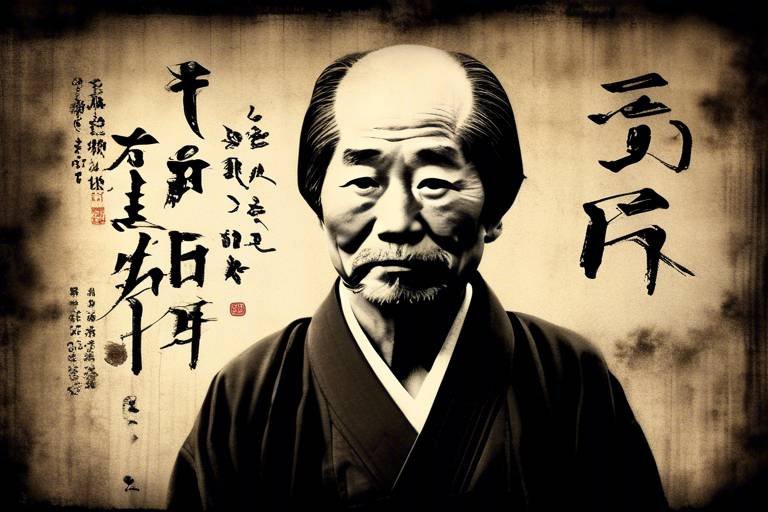Cultural Materialism - Examining the Philosophy of Raymond Williams
Cultural materialism, a term coined by the influential British cultural theorist Raymond Williams, serves as a crucial framework for understanding the interplay between culture and material conditions. This philosophy emerged as a response to the complexities of modern society, where culture is not merely a reflection of ideas or beliefs but is deeply rooted in the material realities of life. Williams argued that to comprehend culture fully, one must consider the socio-economic contexts that shape it. This article dives into the core tenets of cultural materialism, its historical context, and its lasting impact on cultural studies, while also exploring its relevance in today's world.
To grasp the essence of cultural materialism, it is essential to understand the historical backdrop against which Williams developed his ideas. The mid-20th century was a time of significant socio-political upheaval, characterized by the aftermath of World War II, the rise of consumerism, and the emergence of new social movements. These conditions prompted Williams to examine how culture is intertwined with the material realities of everyday life. In a world where traditional structures were being challenged, Williams sought to articulate a philosophy that recognized the importance of economic factors and their influence on cultural practices. His work was not just theoretical; it was a response to the changing dynamics of society, where culture was increasingly seen as a battleground for ideological conflicts.
At the heart of cultural materialism lies the idea that material conditions—such as economic systems, social hierarchies, and environmental factors—shape cultural practices and social structures. Williams emphasized that culture is not an isolated phenomenon; rather, it is a product of the historical and material conditions of a society. This perspective challenges the notion that culture is solely a realm of ideas or artistic expressions, asserting instead that it is fundamentally connected to the material world.
One of the pivotal assertions of cultural materialism is the reciprocal relationship between culture and society. Williams posited that culture influences social structures just as much as those structures shape cultural expressions. For instance, think about how the rise of digital technology has transformed not only the way we create and consume art but also the very fabric of our social interactions. The cultural landscape is continuously evolving, driven by both technological advancements and the material conditions of society. This dynamic interplay is crucial for understanding cultural phenomena in a comprehensive manner.
When we discuss cultural production, it is vital to consider the impact of material conditions on artistic expression. Economic factors often dictate what is produced, who has access to cultural resources, and how cultural narratives are framed. For example, during economic downturns, funding for the arts may dwindle, leading to a shift in the types of stories that are told and the mediums that are used. Williams highlighted that understanding these economic undercurrents is essential for analyzing cultural output, as they often reflect broader societal issues.
Another significant aspect of cultural materialism is its examination of the relationship between ideology and cultural practices. Williams argued that dominant ideologies are not only reflected in cultural expressions but also actively shape them. For instance, consider how advertising reinforces consumerist values through cultural narratives. This relationship creates a feedback loop where cultural practices can challenge or reinforce prevailing ideologies, making it essential to analyze both in tandem to understand their impact on society.
Despite its profound insights, cultural materialism has faced various critiques. Some scholars argue that it may overly emphasize material conditions at the expense of subjective experiences and individual agency. Others contend that it can be deterministic, suggesting that economic factors alone drive cultural practices without acknowledging the complexities of human creativity and resistance. These critiques highlight the need for a balanced approach that considers both material conditions and the rich tapestry of human experience.
In today's rapidly changing cultural landscape, cultural materialism remains relevant as a lens through which we can analyze contemporary issues. From the rise of social media to the impact of globalization, Williams' ideas continue to provide valuable insights into how material conditions shape cultural practices. Scholars are increasingly applying cultural materialist frameworks to explore topics such as identity politics, environmentalism, and the effects of technology on cultural production.
To illustrate the application of cultural materialism, let's consider a few case studies that exemplify Williams' ideas in action. For example, the Black Lives Matter movement showcases how material conditions, such as economic inequality and systemic racism, inform cultural expressions and activism. Similarly, the rise of the gig economy has transformed labor culture, leading to new forms of artistic expression that reflect the realities of precarious work. These case studies highlight the ongoing relevance of cultural materialism in understanding the complexities of contemporary society.
As we look to the future, cultural materialism is poised to evolve in response to the changing cultural landscape. The rise of digital media, shifts in global power dynamics, and increasing awareness of environmental issues will likely prompt new interpretations and adaptations of Williams' foundational principles. Scholars may explore how emerging technologies influence cultural production and how grassroots movements challenge dominant ideologies in innovative ways. The adaptability of cultural materialism ensures its continued relevance in the ever-changing discourse of cultural studies.
- What is cultural materialism? - Cultural materialism is a theoretical framework that examines how material conditions, such as economic and social factors, shape cultural practices and societal structures.
- Who is Raymond Williams? - Raymond Williams was a British cultural theorist and writer known for his contributions to cultural studies and his development of the concept of cultural materialism.
- How does cultural materialism differ from other cultural theories? - Unlike other theories that may focus solely on ideology or aesthetics, cultural materialism emphasizes the importance of material conditions in shaping culture.
- Why is cultural materialism relevant today? - Cultural materialism remains relevant as it provides insights into contemporary issues such as globalization, social media, and the impact of economic conditions on culture.

[Historical Context of Cultural Materialism]
The concept of cultural materialism, as articulated by Raymond Williams, did not emerge in a vacuum. It was born out of the socio-political upheavals and cultural transformations of the mid-20th century. Understanding this historical context is vital to grasping the essence of Williams' philosophy. The post-World War II era was marked by significant changes in society, politics, and economics, particularly in Western Europe and North America. The war had left a profound impact on the global landscape, leading to a questioning of traditional values and a search for new forms of expression.
During this time, the rise of capitalism and the expansion of consumer culture played a pivotal role in shaping social dynamics. The industrial revolution had already set the stage for a shift in how people interacted with their environment, and by the 1950s and 1960s, this transformation was in full swing. Williams was deeply influenced by these changes, recognizing that material conditions—such as economic structures, technological advancements, and labor practices—were not just background factors but active players in the shaping of culture.
Moreover, the political landscape was fraught with tensions, including the Cold War, which pitted capitalist and communist ideologies against each other. This ideological battle influenced cultural production, as artists and intellectuals grappled with the implications of their work in a divided world. Williams' background in Marxist theory provided him with a lens through which he could analyze these shifts, leading him to propose that culture is not merely a reflection of human creativity but is deeply embedded in the material realities of life.
To further understand the historical context of cultural materialism, we can look at the key influences that shaped Williams' thought:
| Influence | Description |
|---|---|
| Marxism | Williams drew on Marxist theory to argue that material conditions influence cultural practices. |
| Post-War Society | The socio-economic changes after World War II prompted a re-evaluation of cultural values. |
| Consumerism | The rise of consumer culture transformed how individuals perceive identity and community. |
| Technological Advances | New technologies changed modes of production and distribution, affecting cultural expression. |
These influences culminated in Williams' argument that culture is not an isolated phenomenon but rather a complex web of interactions shaped by various material and ideological forces. He believed that understanding these forces is essential for analyzing how cultural forms emerge and evolve over time. This perspective was revolutionary, challenging the notion that culture is solely an expression of individual creativity or a reflection of societal norms.
In conclusion, the historical context surrounding the development of cultural materialism reveals a rich tapestry of influences that shaped Raymond Williams' ideology. By examining the socio-political conditions of his time, we can better appreciate the significance of his contributions to cultural studies and the enduring relevance of cultural materialism in contemporary discourse. As we move forward, it’s essential to keep these historical roots in mind, as they provide a foundation for understanding the intricate relationship between culture and society.

[Key Concepts of Cultural Materialism]
Cultural materialism is a fascinating framework that invites us to look beyond the surface of cultural phenomena and examine the underlying material conditions that shape them. At its core, this philosophy, championed by Raymond Williams, argues that culture cannot be understood in isolation; rather, it is inextricably linked to the economic and social structures that give rise to it. Imagine culture as a vast tapestry, where each thread represents a different material condition—such as class, economy, and technology—that weaves together to create the complex patterns of society.
One of the fundamental tenets of cultural materialism is the idea that material conditions—things like economic resources, technological advancements, and social organization—directly influence cultural practices. For instance, consider how the rise of the internet has transformed the way we consume media. This technological development has not only changed our access to information but has also reshaped cultural production, leading to the emergence of new genres and forms of artistic expression. In this sense, cultural materialism encourages us to ask: how do our current material realities shape our cultural outputs?
Moreover, Williams emphasizes the reciprocal relationship between culture and society. It's not just that material conditions shape culture; culture also influences the material world. This dynamic interplay can be likened to a dance where each partner leads and follows in a continuous exchange. For example, the popularization of social media has influenced social movements, allowing marginalized voices to gain visibility and challenge prevailing ideologies. This brings us to the concept of ideology—the beliefs and values that are prevalent in a society—which is another critical aspect of cultural materialism.
In cultural materialism, ideology is viewed as both a product of and a contributor to cultural practices. Dominant ideologies often reflect the interests of the ruling class, but they can also be contested and reshaped through cultural expressions. Think of this process as a game of tug-of-war, where cultural practices can either reinforce or challenge the prevailing ideologies. Williams posits that understanding this relationship helps us to decode the cultural narratives that permeate our lives and to recognize the power dynamics at play.
To illustrate these concepts further, let's consider a table that summarizes the key components of cultural materialism:
| Key Concepts | Description |
|---|---|
| Material Conditions | Economic, social, and technological factors that influence cultural practices. |
| Reciprocal Relationship | The dynamic interplay between culture and society where each influences the other. |
| Ideology | Beliefs and values that reflect and shape cultural practices and social structures. |
In conclusion, the key concepts of cultural materialism invite us to engage deeply with the world around us. By examining the material conditions that shape our cultural landscape, we can uncover the intricate connections between society, culture, and ideology. This perspective not only enriches our understanding of cultural phenomena but also empowers us to critically engage with the narratives that surround us.
- What is cultural materialism? Cultural materialism is a theoretical framework that examines how material conditions influence cultural practices and social structures.
- Who is Raymond Williams? Raymond Williams was a Welsh cultural critic and theorist known for his work in cultural materialism and his analysis of the relationship between culture and society.
- How does cultural materialism differ from other cultural theories? Unlike some cultural theories that focus solely on texts or meanings, cultural materialism emphasizes the importance of economic and social contexts in shaping culture.

[The Relationship Between Culture and Society]
When we dive into the intricate web of cultural materialism, one thing becomes crystal clear: culture and society are not just two separate entities floating around in the ether. Instead, they are deeply intertwined, almost like two dancers moving in perfect harmony. Raymond Williams, the brilliant mind behind this philosophy, argued that culture is shaped by the very social structures that surround it. Think of it this way: just as a tree grows in response to the soil, sunlight, and rain it receives, culture evolves in response to the material conditions of society.
Williams emphasized that culture is not merely a reflection of societal structures; rather, it actively participates in shaping them. This reciprocal relationship means that while society influences culture, cultural practices can also challenge and reshape societal norms. For instance, consider how music genres can reflect social issues. The rise of punk rock in the 1970s didn’t just mirror the discontent of youth; it actively influenced political movements and social change. This dynamic interplay suggests that culture is a living, breathing entity that reflects and responds to the world around it.
Moreover, the relationship between culture and society can be illustrated through various material conditions such as economic status, class structures, and political systems. For example, in a capitalist society, the production and consumption of cultural goods are often dictated by economic power. Those who control capital can influence what cultural narratives are told and which voices are amplified. This can lead to a homogenization of culture, where dominant ideologies overshadow marginalized perspectives. In contrast, grassroots movements often emerge from the fringes, using culture as a tool for social critique and change.
To better understand this relationship, let’s break it down into a few key points:
- Influence of Economic Conditions: The economic environment shapes cultural production. For instance, during economic downturns, art may reflect themes of struggle and resilience.
- Role of Ideology: Dominant ideologies filter through cultural expressions, impacting how stories are told and who gets to tell them.
- Social Movements: Cultural practices can serve as a platform for social movements, allowing marginalized voices to challenge the status quo.
In essence, cultural materialism invites us to view culture as a battlefield where different social forces clash and collaborate. It’s a reminder that our cultural practices are not just passive reflections of our society; they are active participants in shaping it. This realization opens up a world of possibilities for understanding how art, literature, and media can influence societal change. So, next time you find yourself lost in a song or captivated by a novel, remember: you’re not just experiencing culture; you’re engaging in a complex dialogue between culture and society that has the power to transform the world.
- What is cultural materialism? Cultural materialism is a theoretical framework that emphasizes the role of material conditions in shaping culture and social structures.
- How does culture influence society? Culture influences society by shaping norms, values, and practices that can challenge or reinforce social structures.
- Can cultural practices lead to social change? Yes, cultural practices can serve as tools for social change by giving voice to marginalized groups and challenging dominant ideologies.

[Material Conditions and Cultural Production]
When we talk about material conditions, we're diving deep into the very essence of how our surroundings and resources shape the way we create and consume culture. Imagine for a moment that culture is a garden. The soil—which represents our material conditions—determines what can grow there. If the soil is rich and fertile, you might see a vibrant array of flowers and vegetables. Conversely, poor soil yields sparse, struggling plants. Similarly, cultural production is heavily influenced by the economic and social conditions of a given time and place.
Raymond Williams argued that economic factors play a pivotal role in shaping artistic expressions. For instance, during the Industrial Revolution, the shift from agrarian societies to urban centers led to a dramatic change in cultural outputs. The struggles of the working class, the hustle of factory life, and the rapid urbanization were all reflected in the literature, music, and art of that era. This was not mere coincidence; it was a direct response to the material realities people faced daily.
To illustrate this point, consider the following table that outlines how different material conditions can influence cultural production:
| Material Condition | Cultural Production Example | Impact on Society |
|---|---|---|
| Poverty | Blues Music | Expresses struggles, fosters community resilience |
| Wealth | Renaissance Art | Celebrates humanism, reflects societal values |
| War | Protest Literature | Critiques authority, raises awareness |
Furthermore, the relationship between material conditions and cultural production is not one-sided. Just as material conditions shape culture, cultural practices can also influence the material world. For example, the rise of the environmental movement has led to new cultural expressions focused on sustainability and eco-consciousness. Artists and creators are now using their platforms to advocate for a healthier planet, thus intertwining their cultural production with pressing material concerns.
In essence, the interplay between material conditions and cultural production is a dynamic process. It’s a dance where each partner influences the other. As we continue to navigate through contemporary issues such as globalization, technological advancements, and social justice movements, understanding this relationship becomes increasingly vital. It allows us to appreciate not just the art, literature, and music we consume but also the deeper societal narratives they represent.

[Ideology and Cultural Practices]
When we dive into the intricate relationship between ideology and cultural practices, it becomes evident that these two elements are not merely parallel tracks; they are deeply intertwined, influencing and shaping each other in profound ways. Ideology serves as a lens through which we interpret the world, and cultural practices are the manifestations of those interpretations. For instance, think about how a society's dominant ideology can dictate what is considered acceptable or unacceptable in art, music, and literature. This is where cultural materialism shines a light on the dynamics at play.
Raymond Williams posited that cultural practices are often a reflection of the prevailing ideologies of a given time. These ideologies, whether they stem from economic conditions, political power structures, or social norms, play a crucial role in shaping the cultural landscape. In this sense, cultural materialism emphasizes that our cultural outputs—films, novels, and even everyday interactions—are not created in a vacuum. They are products of their environment, influenced by the material and ideological conditions surrounding them.
To better understand this relationship, consider the following examples:
- Political Art: During times of political upheaval, artists often create works that challenge the status quo. Think of the protest songs of the 1960s or the politically charged graffiti seen in various urban landscapes. These works are not just artistic expressions; they are reactions to the ideological battles being fought in society.
- Consumer Culture: The rise of consumerism has led to a shift in cultural practices, where the ideology of capitalism promotes the idea that happiness can be purchased. This ideology shapes everything from advertising to lifestyle choices, influencing how individuals perceive their identities and aspirations.
Moreover, the relationship between ideology and cultural practices is not one-sided. Just as ideologies shape cultural outputs, cultural practices can also challenge and reshape ideologies. For example, the emergence of social movements advocating for gender equality has significantly influenced cultural narratives, leading to more diverse representations in media and literature. This reciprocal influence highlights the dynamic nature of culture and ideology.
In summary, understanding the interplay between ideology and cultural practices through the lens of cultural materialism allows us to appreciate how deeply rooted our cultural expressions are in the material conditions of society. This perspective not only enriches our understanding of cultural phenomena but also encourages us to critically examine the ideologies that inform our everyday lives.
- What is cultural materialism? Cultural materialism is a theoretical framework that emphasizes the role of material conditions—such as economic and social factors—in shaping culture and ideology.
- How does ideology influence cultural practices? Ideology influences cultural practices by establishing norms and values that dictate what is considered acceptable or desirable in a given society.
- Can cultural practices change ideologies? Yes, cultural practices can challenge and reshape ideologies, particularly when they reflect new social movements or shifts in public consciousness.

[Critiques of Cultural Materialism]
Cultural materialism, while groundbreaking in its approach, has not escaped scrutiny. Critics argue that it often oversimplifies the complex relationship between culture and material conditions. For instance, some scholars assert that Williams' framework tends to prioritize economic factors at the expense of other significant influences, such as ideology, individual agency, and historical context. This raises a crucial question: can we truly understand culture without considering the multitude of forces that shape it?
Moreover, cultural materialism has been critiqued for its tendency to generalize across different cultures and societies. Critics argue that by focusing primarily on material conditions, it risks ignoring the unique cultural narratives and practices that exist within various communities. This is particularly evident when examining non-Western cultures, where the interplay of tradition, spirituality, and local customs may not align neatly with Williams' materialist lens. In this regard, the argument stands that cultural materialism may inadvertently promote a form of cultural imperialism by imposing Western theoretical frameworks onto diverse cultural contexts.
Another significant critique revolves around the concept of ideology. While cultural materialism acknowledges the role of ideology in shaping cultural practices, some scholars argue that it does not sufficiently account for the ways in which people actively negotiate, resist, or even subvert dominant ideologies. This perspective emphasizes the agency of individuals and groups, suggesting that cultural practices are not merely reflections of material conditions but also sites of resistance and negotiation. Thus, the question arises: how do we reconcile the deterministic aspects of cultural materialism with the dynamic and often unpredictable nature of cultural production?
Additionally, the methodology employed by cultural materialists has faced criticism. Some argue that the reliance on empirical data can lead to a reductionist view of culture, where the richness of human experience is distilled into quantifiable metrics. This approach may overlook the emotional, symbolic, and subjective dimensions of culture that are essential for a comprehensive understanding of human behavior. Critics contend that cultural materialism should strive for a more holistic methodology that incorporates qualitative insights alongside quantitative analysis.
Despite these critiques, it is essential to recognize that cultural materialism has sparked vital discussions within cultural studies. Its emphasis on the interplay between material conditions and cultural practices has opened new avenues for inquiry and debate. By addressing its limitations, scholars can refine and adapt Williams' ideas to better suit contemporary contexts and complexities. As we navigate the evolving landscape of cultural studies, engaging with these critiques not only strengthens the field but also enriches our understanding of culture itself.
- What is cultural materialism? Cultural materialism is a theoretical framework developed by Raymond Williams that emphasizes the relationship between material conditions (such as economic factors) and cultural practices.
- What are the key critiques of cultural materialism? Critics argue that it oversimplifies the relationship between culture and material conditions, generalizes across cultures, and may overlook the agency of individuals in cultural production.
- How does cultural materialism apply to contemporary studies? Cultural materialism remains relevant by providing tools to analyze the influence of material conditions on cultural practices in current social and political contexts.

[Cultural Materialism in Contemporary Studies]
In today's rapidly evolving cultural landscape, the relevance of cultural materialism remains significant, as it provides a robust framework for analyzing the intricate connections between culture, society, and material conditions. As we navigate through contemporary issues—be it the impact of social media on public discourse or the role of economic disparities in shaping cultural narratives—Raymond Williams' philosophy offers a lens through which we can critically engage with these phenomena. Cultural materialism encourages us to ask: how do our material realities influence the stories we tell, the art we create, and the ideologies we uphold?
One of the most compelling aspects of cultural materialism is its ability to adapt to the shifting dynamics of modern society. In an age where globalization and technology are reshaping cultural identities, Williams’ emphasis on the material conditions that underpin cultural practices is more pertinent than ever. For instance, the rise of streaming platforms has not only transformed how we consume media but has also altered the economic structures that support cultural production. This shift prompts us to consider questions such as: who benefits from these changes? What new cultural forms are emerging as a result?
Moreover, cultural materialism invites us to explore the interplay between culture and politics. In contemporary studies, we see how cultural artifacts—be it films, literature, or social media content—often reflect and challenge prevailing ideologies. For example, the portrayal of marginalized communities in popular media can either reinforce stereotypes or serve as a platform for resistance. Understanding these dynamics requires a critical examination of the material conditions that inform these representations, including economic power, social class, and political agendas.
To illustrate the ongoing relevance of cultural materialism, consider the following table that outlines key contemporary issues and their cultural implications:
| Contemporary Issue | Cultural Implication | Material Condition |
|---|---|---|
| Social Media Influence | Shifts in public discourse and identity formation | Access to technology and internet connectivity |
| Economic Inequality | Representation of class struggles in media | Wealth distribution and labor conditions |
| Globalization | Cultural homogenization vs. local identities | Trade policies and migration patterns |
This table not only highlights the interconnectedness of various issues but also emphasizes the necessity of a cultural materialist approach in understanding these complexities. By examining the material conditions surrounding these contemporary phenomena, we can gain deeper insights into the cultural practices that emerge in response.
As we look to the future, the application of cultural materialism in contemporary studies will likely expand, addressing new challenges and opportunities. Scholars and practitioners alike will need to remain vigilant in analyzing how material realities shape cultural expressions and societal structures. This ongoing dialogue will ensure that cultural materialism continues to be a vital tool for dissecting the layers of meaning within our rapidly changing world.
- What is cultural materialism? Cultural materialism is a theoretical framework that emphasizes the role of material conditions—such as economic factors and social structures—in shaping cultural practices and ideologies.
- How does cultural materialism apply to contemporary issues? It provides insights into how current cultural phenomena, like social media and globalization, are influenced by material realities, helping us understand the reciprocal relationship between culture and society.
- Can cultural materialism adapt to new cultural landscapes? Yes, cultural materialism is inherently adaptable, allowing it to address emerging issues and shifts in cultural production and consumption.

[Case Studies in Cultural Materialism]
To truly grasp the essence of cultural materialism, we can look at several compelling case studies that illustrate how Raymond Williams' ideas manifest in real-world scenarios. One notable example is the analysis of television as a cultural medium. Williams argued that television is not merely a source of entertainment; it reflects and shapes the material conditions of society. For instance, the portrayal of working-class life in British television dramas during the 1960s and 70s, such as "Up the Junction" and "Cathy Come Home," serves as a lens through which we can examine the socio-economic realities of that time. These programs highlighted the struggles faced by the working class, thus bridging the gap between cultural representation and material conditions.
Another significant case study is the examination of music genres and their socio-political contexts. Take, for example, the rise of punk rock in the late 1970s. Emerging from a backdrop of economic decline and social unrest, punk music was a direct response to the material conditions of the time. Bands like the Sex Pistols and The Clash articulated the frustrations of a disillusioned youth, challenging the status quo and expressing their anger through raw, powerful music. This phenomenon exemplifies how cultural production is influenced by material conditions, as the punk movement was not just about the music but also a form of resistance against prevailing ideologies and societal norms.
Furthermore, we can explore the impact of globalization on local cultures through the lens of cultural materialism. In many parts of the world, the influx of global media has transformed local cultural practices. For instance, in countries like India, the rise of Bollywood cinema has not only been a reflection of changing material conditions—such as urbanization and economic growth—but has also influenced social norms and values. The fusion of traditional narratives with contemporary issues showcases how cultural practices evolve in response to both local and global material conditions.
In addition to these examples, we can also consider the role of literature in cultural materialism. The works of authors like Charles Dickens provide a vivid portrayal of the socio-economic realities of Victorian England. Dickens' novels, often centered around the struggles of the poor and working class, serve as both a critique of the material conditions of his time and a reflection of the societal changes occurring in the industrial age. His stories reveal how literature can act as a cultural response to the material world, showcasing the interplay between ideology, culture, and social structures.
Overall, these case studies not only exemplify the principles of cultural materialism but also highlight its relevance in understanding the complex relationship between culture and society. By examining how material conditions shape cultural practices, we gain insights into the intricate ways in which ideology and social structures interact, ultimately enriching our understanding of cultural studies as a whole.
- What is cultural materialism? Cultural materialism is a theoretical framework that examines the relationship between material conditions and cultural practices, emphasizing how economic and social factors shape cultural expressions.
- Who is Raymond Williams? Raymond Williams was a British cultural critic and theorist known for his influential ideas on culture, society, and the role of literature and media in shaping social consciousness.
- How does cultural materialism differ from other cultural theories? Unlike some cultural theories that prioritize ideology or textual analysis, cultural materialism focuses on the material conditions—such as economic and social factors—that influence cultural production and practices.
- Can cultural materialism be applied to contemporary issues? Yes, cultural materialism remains relevant today as it provides a framework for analyzing how current socio-political conditions impact cultural expressions, such as media, literature, and art.

[Future Directions of Cultural Materialism]
As we look toward the horizon of cultural materialism, it's essential to recognize that this philosophical framework is not static; it evolves and adapts to the shifting sands of contemporary society. The future of cultural materialism lies in its ability to integrate with emerging theories and practices, addressing new challenges posed by globalization, digital culture, and environmental crises. One significant area of growth is the intersection of cultural materialism with digital humanities. As technology reshapes how we produce and consume culture, cultural materialism must consider the implications of digital media on cultural practices and social structures.
Moreover, as we continue to grapple with issues of inequality and social justice, cultural materialism can provide critical insights into how material conditions influence the experiences of marginalized groups. By focusing on the socio-economic factors that shape cultural production, scholars can uncover the hidden narratives that challenge dominant ideologies. For instance, examining the representation of underrepresented communities in various media forms can reveal how cultural expressions both reflect and resist systemic oppression.
Another promising direction for cultural materialism is its potential to address the environmental crisis. In a world increasingly aware of the impact of climate change, cultural materialism can help analyze how material conditions—such as industrialization and consumer culture—contribute to ecological degradation. This approach encourages a critical examination of the relationship between culture and nature, urging us to rethink our values and practices in light of sustainability.
Additionally, the rise of intersectionality in cultural studies presents an opportunity for cultural materialism to expand its analytical framework. By integrating intersectional perspectives, scholars can better understand how overlapping identities—such as race, gender, and class—interact with material conditions to shape cultural experiences. This holistic approach not only enriches cultural materialism but also makes it more relevant in addressing contemporary social issues.
In summary, the future directions of cultural materialism are bright and multifaceted. By embracing technological advancements, addressing pressing social issues, and integrating diverse perspectives, cultural materialism can continue to be a vital tool for understanding the intricate web of culture and society. As we move forward, it is crucial for scholars and practitioners to remain open to new ideas and collaborations that can further enhance this dynamic field.
- What is cultural materialism? Cultural materialism is a theoretical framework that examines the relationship between material conditions and cultural practices, emphasizing how socio-economic factors shape cultural expressions.
- Who is Raymond Williams? Raymond Williams was a Welsh cultural theorist, literary critic, and socialist thinker known for his contributions to cultural studies, particularly through his development of cultural materialism.
- How does cultural materialism differ from other cultural theories? Unlike other cultural theories that may prioritize ideology or aesthetics, cultural materialism focuses on the material conditions that influence cultural production and social structures.
- Why is cultural materialism relevant today? Cultural materialism remains relevant as it provides critical insights into contemporary issues such as globalization, inequality, and environmental crises, helping to analyze how these factors shape cultural practices.
Frequently Asked Questions
- What is cultural materialism?
Cultural materialism is a theoretical framework developed by Raymond Williams that emphasizes the relationship between material conditions and cultural practices. It posits that cultural expressions are deeply influenced by economic, social, and political factors, rather than existing in isolation.
- How did historical context influence Raymond Williams' ideas?
Williams' ideas were shaped by the socio-political climate of his time, particularly the class struggles and the impact of industrialization in Britain. Understanding the historical backdrop helps to appreciate how these factors influenced his perspective on culture and society.
- What are the key concepts of cultural materialism?
Key concepts of cultural materialism include the focus on material conditions, the interrelationship between culture and society, and the influence of dominant ideologies on cultural practices. These concepts underscore how cultural production is often a reflection of the socio-economic environment.
- How does cultural materialism view the relationship between culture and society?
Cultural materialism argues that culture and society are intertwined, with each influencing the other. Cultural practices are shaped by social structures, while cultural expressions can also impact social conditions, creating a dynamic interplay.
- What role do material conditions play in cultural production?
Material conditions, such as economic factors and social structures, significantly impact cultural production. For instance, artists and creators often respond to the economic realities of their time, which can shape their work and the messages they convey.
- How does ideology relate to cultural practices according to cultural materialism?
Cultural materialism highlights that ideology and cultural practices are mutually influential. Dominant ideologies can shape cultural expressions, while cultural practices can also challenge or reinforce these ideologies, creating a complex relationship.
- What are some critiques of cultural materialism?
Critiques of cultural materialism often focus on its perceived limitations, such as an overemphasis on material conditions at the expense of individual agency or the complexity of cultural expressions. Scholars argue that it may not fully account for the diversity of cultural experiences.
- Is cultural materialism still relevant today?
Yes, cultural materialism remains relevant in contemporary studies, as it provides a framework for analyzing how material conditions continue to shape cultural practices in modern social and political contexts. It allows for a deeper understanding of current cultural phenomena.
- Can you give examples of case studies in cultural materialism?
Case studies in cultural materialism often explore specific cultural texts or movements that exemplify the principles of Williams' theories. These could include analyses of literature, film, or art that reflect the socio-economic contexts in which they were produced.
- What might the future hold for cultural materialism?
The future of cultural materialism may involve adaptations to address new cultural landscapes shaped by globalization, technology, and shifting social dynamics. Scholars may explore how these changes impact the relationship between culture and material conditions.



















